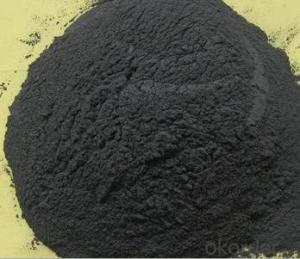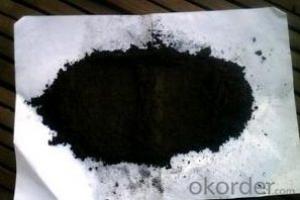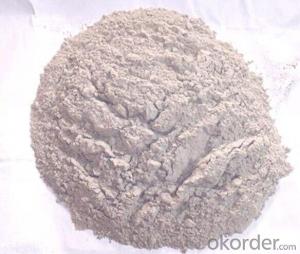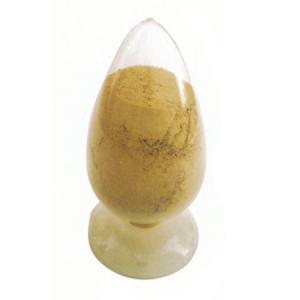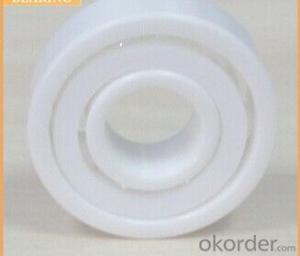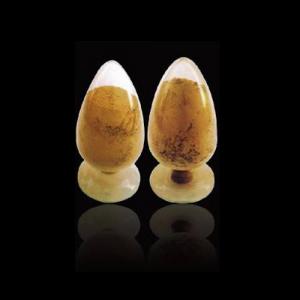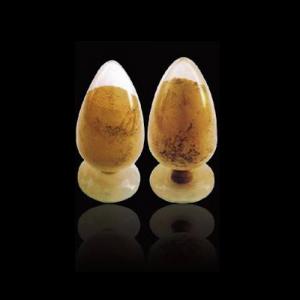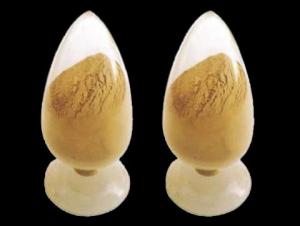Raw Carbon Material Made by Insulation Material
- Loading Port:
- Shekou
- Payment Terms:
- TT OR LC
- Min Order Qty:
- 20 m.t
- Supply Capability:
- 1000 m.t/month
OKorder Service Pledge
OKorder Financial Service
You Might Also Like
Factory Background
The factory is majorly running and operating carbon additive (pitch coke, calcined petroleum coke and anthracite), low nitrogen carbon additive, and brake pad making material. Company is the long term supplier of Sinosteel Corporation, Shanghai Carbon Corporation, the plant of SGL Group the Carbon Company in China and some largest special carbon products producing plants.
YUAI also supplies huge amout of high quality carbon additive and graphite carbon additive to steel plants, foundries and ferrotungsten plants. YUAI has been assigned by BAO STEEL as the only organization for processing pitch coke for export purpose. The group’s major products are constantly exported to Japan, Korea, Malaysia, South East Asia countries, Europe and America, which receive praises by our consumers.
The group has invested numbers of calcinators in Anhui China to ensure the capability of producing and processing huge amount of carbon additive. Further investment is on process. According to the orders from customers, YUAI is able to processing and providing different specifications of carbon additive and other products. To provide best quality of products and to offer customers most satisfied service is YUAI’s operating objectives.
Calcined Petroleum Coke
FC:98.5%min,
S:0.5%max
A:0.8%max
V:0.7%max
Mositure:0.5%max
Size:1-5mm
This product is mainly used in steel-making and foundry. Calcined Petroleum Coke
Calcined Petroleum Coke comes from delayed coke which extracted from oil refinery. Although Calcined Petroleum Coke contains a little bit higher level of sulfur and nitrogen than pitch coke, the price advantage still makes it widely used during steel-making and founding as a kind of carbon additive/carburant.
Technology:
Laborary Equpment
In our lab,we has a high precision balance,mullfe furnace,sample making machine, dring box,sulfur measurement instrument and other calibratiing equipments.As a result,before deliverung to our customers,our products have to pass a strict test to ensure the quality and components.The testing reports will be sent to our customers to confirm untill they satisfy with it.
Packaging & Delivery
Packaging Detail:25kg paper bag into 1t weaving bag 5kg, 10kg and 20kg weaving bag into 1t weaving bag 25kg weaving bag put on pallet covered with entanglement wrap product direct into packing bag 25kg paper bag put on pallet covered with entanglement Wrap 25kg weaving bag into 1t weaving bag.
Delivery Details: 7 days
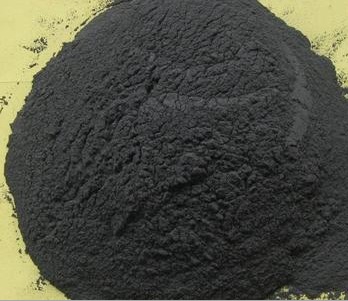

- Q:What are the key properties of ramming mixes used for monolithic refractory installations?
- The key properties of ramming mixes used for monolithic refractory installations are: 1. High thermal stability: Ramming mixes should possess high thermal stability to withstand the extreme temperatures and thermal cycling in refractory applications. This property ensures that the ramming mix remains intact and does not undergo significant structural changes under varying thermal conditions. 2. High density: Ramming mixes need to have a high density to provide good resistance against thermal conductivity. This property helps in minimizing heat loss and maintaining the desired temperature in the refractory lining. 3. Low porosity: Low porosity is essential for ramming mixes as it helps in reducing the penetration of molten metals or slag into the refractory lining. This property enhances the overall durability and longevity of the refractory installation. 4. Good mechanical strength: Ramming mixes should possess good mechanical strength to withstand the stresses and loads encountered during installation, as well as during the operation of the refractory lining. This property ensures that the ramming mix can resist any physical or mechanical damage, such as cracking or spalling. 5. Chemical resistance: Ramming mixes should exhibit excellent resistance to chemical attack from molten metals, slag, or corrosive gases. This property is crucial for protecting the refractory lining from chemical reactions and degradation, which can compromise its performance and lifespan. 6. Easy installation and workability: Ramming mixes should have good workability, allowing for easy installation and compaction. This property ensures that the mix can be easily shaped and rammed into place without excessive effort or time, facilitating efficient and effective refractory installations. 7. Controlled setting time: Ramming mixes should have a controlled setting time to allow sufficient time for proper placement and consolidation. This property ensures that the mix remains workable during installation but sets and hardens within a reasonable time frame, allowing for timely completion of the refractory lining. In summary, the key properties of ramming mixes used for monolithic refractory installations include high thermal stability, high density, low porosity, good mechanical strength, chemical resistance, easy installation and workability, and controlled setting time. These properties collectively contribute to the overall performance, durability, and longevity of the refractory lining in various high-temperature applications.
- Q:What are the specific requirements of monolithic refractories for ladle purging applications?
- The specific requirements of monolithic refractories for ladle purging applications include high thermal shock resistance, excellent erosion resistance, good slag resistance, and low porosity. Thermal shock resistance is crucial in ladle purging applications as the refractory material needs to withstand rapid temperature changes without cracking or spalling. This is particularly important during ladle purging, where the ladle is exposed to high temperatures during molten metal pouring and then quickly cooled down during purging. Erosion resistance is another important requirement for monolithic refractories in ladle purging applications. The refractory material should be able to withstand the erosive action of molten metal streams and metalloids during purging. It should have a high resistance to chemical attack, preventing the material from deteriorating or eroding away. Slag resistance is also necessary for monolithic refractories used in ladle purging. The refractory material should have good resistance to the corrosive effects of slag, which can be present in ladles during purging. Slag can cause chemical reactions that can degrade the refractory material, leading to premature failure. Low porosity is an essential requirement for monolithic refractories in ladle purging applications. Low porosity ensures that the refractory material is impermeable to molten metal, preventing it from infiltrating the material and causing damage. This also helps to maintain the integrity and performance of the refractory lining during ladle purging. Overall, monolithic refractories for ladle purging applications need to exhibit high thermal shock resistance, excellent erosion resistance, good slag resistance, and low porosity to ensure the durability and longevity of the refractory lining in ladles during purging operations.
- Q:What are monolithic refractories and how are they different from other refractory materials?
- Monolithic refractories are a type of refractory material that is produced and applied in a single, unified form. Unlike other refractory materials, such as bricks or tiles, monolithic refractories are not pre-formed into specific shapes or sizes. Instead, they are generally composed of a mix of aggregates, binders, and additives, which are then installed in place and cured to form a solid, dense structure. One key difference between monolithic refractories and other refractory materials is their versatility and ease of installation. Traditional refractory bricks or tiles require skilled labor and careful assembly to create a lining or structure. Monolithic refractories, on the other hand, can be poured, sprayed, or gunned into place, allowing for a much faster and more efficient installation process. This makes them particularly suitable for complex shapes or areas that are difficult to access. Another difference lies in the physical properties of monolithic refractories. While bricks and tiles are typically characterized by their high mechanical strength and resistance to thermal shock, monolithic refractories can be tailored to exhibit a wide range of properties. They can be engineered to have excellent thermal insulation, superior corrosion resistance, or enhanced abrasion resistance, depending on the specific application requirements. This flexibility makes monolithic refractories suitable for a variety of industries, including steel, cement, glass, and petrochemical. Furthermore, monolithic refractories have the advantage of being able to expand and contract with temperature changes, unlike rigid brick structures. This thermal flexibility helps to minimize cracking and damage caused by thermal cycling, prolonging the lifespan of the refractory lining. Additionally, monolithic refractories offer better refractory integrity and reduced joint failure, as there are no seams or weak points that can be susceptible to thermal stresses. In summary, monolithic refractories are a versatile and convenient type of refractory material that can be customized to meet specific application requirements. Their ease of installation, thermal flexibility, and tailor-made properties make them distinct from other refractory materials such as bricks or tiles.
- Q:What are the limitations of monolithic refractories in high-temperature applications?
- Monolithic refractories are renowned for their versatility and ease of installation, which has made them a popular choice in various high-temperature settings. However, it is important to take into account their specific limitations. To begin with, monolithic refractories have a restricted ability to withstand thermal shock. Significant temperature changes, such as those encountered during start-up or shutdown procedures, can subject them to thermal stress, resulting in cracking or spalling. This can be a significant issue in scenarios where the refractory is exposed to frequent temperature fluctuations. Moreover, monolithic refractories possess comparatively lower mechanical strength in comparison to traditional brick or block refractories. This can lead to a diminished ability to withstand mechanical stress, including abrasion or impact, particularly in high-temperature environments. Consequently, they may not be suitable for applications that involve high mechanical loading or abrasive conditions. Another drawback of monolithic refractories is their vulnerability to chemical attack. Certain aggressive chemical environments can trigger chemical reactions with the refractory material, leading to deterioration or corrosion. This becomes a concern in applications that involve acidic or alkaline substances, where specialized refractory materials may be necessary. Additionally, monolithic refractories are more susceptible to spalling or erosion caused by thermal cycling. The repetitive expansion and contraction of the refractory material due to temperature changes can result in the formation of cracks or gaps, making them more prone to erosion from gases or liquids. This limitation must be carefully considered in applications where long-term durability is crucial. Lastly, repairing or replacing monolithic refractories can be challenging compared to brick or block refractories. Once installed, removing and replacing a monolithic lining can prove difficult, especially in complex shapes or confined spaces. This limitation can lead to prolonged downtime or increased maintenance and repair costs. In conclusion, while monolithic refractories offer numerous advantages in high-temperature applications, they also come with limitations in terms of thermal shock resistance, mechanical strength, chemical resistance, erosion, and repairability. It is crucial to thoroughly assess these limitations to ensure the suitability of monolithic refractories for specific application requirements.
- Q:How do monolithic refractories improve the efficiency of ladle and tundish lining systems?
- The efficiency of ladle and tundish lining systems is greatly enhanced by monolithic refractories in several ways. Firstly, these refractories are made from a single piece of material, eliminating the need for joints or seams. This seamless construction guarantees a lack of weak points in the lining system, reducing the chances of molten metal leakage or infiltration. Moreover, monolithic refractories possess exceptional thermal insulation properties. With their low thermal conductivity, they are able to withstand high temperatures without transferring heat to the surrounding environment. This insulation capability minimizes heat loss from the ladle or tundish, resulting in improved heat retention and energy efficiency. Additionally, it ensures that the desired temperature of the molten metal is maintained, preventing premature solidification and ensuring the necessary fluidity for casting. Furthermore, monolithic refractories exhibit outstanding resistance to chemical attacks caused by molten metal and slag. Their excellent corrosion resistance properties ensure the durability and integrity of the lining, even in the face of aggressive chemical reactions. This resistance to corrosion prolongs the lifespan of the lining system, reducing the need for frequent maintenance and replacement, thereby increasing overall efficiency and reducing downtime. Another advantage of monolithic refractories is their easy installation. Unlike traditional brick or block linings, monolithic refractories can be applied as a single, uniform layer, simplifying and speeding up the installation process. This reduces the time required for lining repairs or replacements, minimizing disruptions to production and enhancing the overall operational efficiency of ladles and tundishes. In conclusion, monolithic refractories enhance the efficiency of ladle and tundish lining systems through their seamless construction, excellent thermal insulation, superior corrosion resistance, and easy installation. These characteristics ensure improved heat retention, reduced heat loss, increased durability, and minimized downtime, resulting in enhanced productivity and cost-effectiveness for metal casting processes.
- Q:What are the main causes of monolithic refractory failure in the iron and steel industry?
- Monolithic refractory failure in the iron and steel industry can be attributed to various causes. Thermal cycling stands out as one of the primary factors. The extreme temperatures encountered during iron and steel manufacturing, including melting, casting, and heat treating, expose the refractory lining to significant thermal stress. This repetitive expansion and contraction of the material can lead to cracking, spalling, or even complete disintegration of the refractory. Chemical attack is another common cause of failure. The iron and steel industry utilizes different chemicals, such as molten metal, slag, and gases, which can react with the refractory lining. This chemical interaction can result in erosion, corrosion, or chemical decomposition of the refractory material, ultimately causing failure over time. Mechanical stress also plays a significant role in monolithic refractory failure. The heavy machinery and equipment employed in iron and steel production produce vibrations, shocks, and impacts that can weaken or damage the refractory lining. Additionally, improper installation or design can create stress concentration points, making the refractory more susceptible to failure. Furthermore, refractory failure can be attributed to improper maintenance and operational practices. Inadequate cooling or heating procedures, improper drying and curing of the refractory, and insufficient cleaning and inspection can all affect the longevity and performance of the material. Neglecting regular maintenance and timely repairs can exacerbate minor issues, eventually leading to more significant failures. Lastly, the choice and quality of refractory material are crucial factors in failure. Opting for an unsuitable refractory for a specific application or using low-quality materials can result in premature failure. Considering factors such as temperature range, chemical exposure, and mechanical stress is essential when selecting the refractory lining to ensure its suitability and durability in the iron and steel industry. To summarize, the main causes of monolithic refractory failure in the iron and steel industry include thermal cycling, chemical attack, mechanical stress, improper maintenance and operational practices, and the choice and quality of refractory material. Addressing these factors through proper installation, regular maintenance, and careful material selection can help mitigate refractory failures and enhance the overall efficiency and productivity of iron and steel production processes.
- Q:How do monolithic refractories resist erosion from molten metals and slags?
- Monolithic refractories resist erosion from molten metals and slags through several mechanisms. Firstly, they have a high melting point, which allows them to withstand the high temperatures of molten metals and slags without any significant degradation. Secondly, they have a dense and compact structure, which reduces the penetration of molten metals and slags into their surface. Additionally, monolithic refractories often contain additives such as antioxidants or slag resistance agents, which further enhance their resistance to erosion.
- Q:What are the common testing methods used to evaluate the performance of monolithic refractories?
- The common testing methods used to evaluate the performance of monolithic refractories include thermal conductivity testing, hot modulus of rupture testing, abrasion resistance testing, thermal shock resistance testing, and corrosion resistance testing.
- Q:How do monolithic refractories handle thermal expansion and contraction?
- Monolithic refractories are designed to handle the challenges of thermal expansion and contraction. These materials are composed of a single solid structure, as opposed to the traditional brick or tile forms of refractories. This unique composition allows monolithic refractories to better accommodate the thermal stresses associated with temperature changes. One way that monolithic refractories handle thermal expansion and contraction is through their ability to withstand high temperatures. These materials are typically engineered to have a high melting point, allowing them to maintain their structural integrity even under extreme heat conditions. This property helps to prevent the refractory from cracking or disintegrating due to thermal expansion. In addition, monolithic refractories often contain a binder or bonding agent that helps to hold the refractory particles together. This binder can be formulated to have a certain degree of flexibility, allowing the material to expand and contract without cracking or breaking. This flexibility helps to absorb the stresses caused by thermal expansion and contraction, ensuring the longevity and performance of the refractory. Furthermore, monolithic refractories can be applied in a way that allows for expansion and contraction. These materials can be installed with joints or gaps between sections, which can accommodate the movement caused by temperature changes. This technique, known as joint design or expansion joint systems, allows the refractory to expand and contract without causing damage to the overall structure. Overall, monolithic refractories are designed to handle thermal expansion and contraction by withstanding high temperatures, incorporating flexible binders, and using joint design techniques. These properties enable them to maintain their structural integrity and performance in extreme heat conditions, making them a reliable choice for applications that require resistance to thermal stress.
- Q:What are the recent developments in monolithic refractories for the iron and steel industry?
- Recent developments in monolithic refractories for the iron and steel industry include advancements in material composition, manufacturing techniques, and application methods. These developments have led to improved refractory performance, enhanced durability, and increased energy efficiency. Some notable developments include the use of new raw materials, such as nano-sized additives and ultra-high temperature-resistant binders, which enhance the refractory's resistance to thermal shock and corrosion. Additionally, advancements in manufacturing techniques, such as advanced mixing technologies and precise curing processes, have resulted in more homogenous and consistent refractory structures. Furthermore, there have been innovations in application methods, including the use of robotic systems for precise and efficient installation, leading to reduced downtime and increased productivity in the iron and steel industry. Overall, these recent developments in monolithic refractories have significantly contributed to the optimization of iron and steel production processes.
1. Manufacturer Overview |
|
|---|---|
| Location | |
| Year Established | |
| Annual Output Value | |
| Main Markets | |
| Company Certifications | |
2. Manufacturer Certificates |
|
|---|---|
| a) Certification Name | |
| Range | |
| Reference | |
| Validity Period | |
3. Manufacturer Capability |
|
|---|---|
| a)Trade Capacity | |
| Nearest Port | |
| Export Percentage | |
| No.of Employees in Trade Department | |
| Language Spoken: | |
| b)Factory Information | |
| Factory Size: | |
| No. of Production Lines | |
| Contract Manufacturing | |
| Product Price Range | |
Send your message to us
Raw Carbon Material Made by Insulation Material
- Loading Port:
- Shekou
- Payment Terms:
- TT OR LC
- Min Order Qty:
- 20 m.t
- Supply Capability:
- 1000 m.t/month
OKorder Service Pledge
OKorder Financial Service
Similar products
New products
Hot products
Hot Searches
Related keywords
